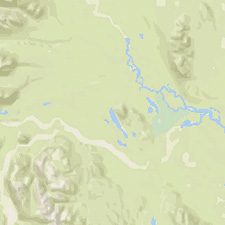Alaska’s raptor population is diverse. Eagles, falcons, hawks and owls can be found throughout the state and you can visit several species at the Alaska Raptor Center, a 17-acre campus on the edge of the Tongass National Forest.
Within walking distance from downtown Sitka (just 20 minutes from Centennial Hall), a visit to the Center is the perfect way to stretch your legs and see Alaska’s wild birds up close. Learn about the different species, see their rehabilitation in action, and enjoy a stroll along the grounds.
If you’re short on time you can see it in 45 minutes, but it’s easy to linger and spend 2 hours, meeting the birds and hearing their stories, learning fun facts, and watching them fly.
Meet the Gang
The Alaska Raptor Center’s number one goal is to rehabilitate, then send birds back to the wild. The Center treats over 200 birds each year and provides a permanent home for 25 “Raptors-in-Residence,” who can no longer fly or fend for themselves. Look eagles in the eye, gape at the head rotation of a snowy owl, and check out a variety of other species such as American kestrel, peregrine falcon, great-horned owl, red-tailed hawk, and even the tiny northern saw-whet owl.
Know Your Raptor
You can use the knowledge you learn here throughout the rest of your Alaska vacation. Find out what to look and listen for when you are out in the forest:
- Falcons and eagles soar through the sky, whereas certain hawks fly through the forest from tree to tree.
- To the untrained eye, a golden eagle and fledgling bald eagle may look the same. Learn how to distinguish between the two.
- The ubiquitous “Red-tailed Hawk Call,” used as the all-purpose raptor cry for movies, is not like that of an eagle. Listen to both and hear the difference.
Watch Them Fly
The Center’s 20,000-cubic-foot flight-training aviary is like a workout facility for convalescing eagles, where they stretch their wings and strengthen muscles in preparation for freedom day. The aviary’s soundproof viewing corridor has one-way glass, allowing you to watch without disturbing them. The rehabilitating eagles bathe in the stream, preen their feathers, and fly from one perch to another, giving you insight into eagle behavior that you don’t often see in the wild.
Hear Bird Tales
Birds end up at the Center for a variety of reasons, some of which include starvation, collisions with cars, getting tangled in fishing line, and ingesting poison.
See them up close and hear their stories. Like, how the Center’s oldest resident, a 30+ year-old bald eagle named Volta, got his name after an unfortunate encounter with a power line. You’ll learn what twist of fate brought Boris, Oliver, Spirit and the others to this sanctuary for sick and injured raptors, and how their brethren are faring in the wild.
Finish your visit on a relaxing ¼-mile walk on the Center’s nature trail, through unique muskeg habitat and the nearby the Indian River. Listen and watch carefully, as you might even spot a “non-resident” bird on this outing.
Humble Beginnings
About 85% of the injuries seen each year are related to humans. That any of these wild birds are rescued, and rehabilitated, is due to humans, too. The Center traces its origins to 1980, when some friends cared for an injured eagle in a local backyard. After more birds and more people got involved, the rescue effort found its first home — a dilapidated tool shed on the Sheldon Jackson College campus. Today it’s a modern facility and the largest bird treatment center in Alaska, drawing tens-of-thousands of visitors each year.
Reinforcing the Nest
Your visit to the Alaska Raptor Center helps support its overall mission to promote and enhance wild populations of raptors and other avian species through rehabilitation, education, and research. More than 1,500 people worldwide are members of the Alaska Raptor Center and help support this mission. You can get involved, too:
Adopt-A-Raptor: For $75, you can help support the daily care, feeding, and medical treatment of your adopted bird. Receive an adoption certificate, a photo and biography of your bird, natural history information, a subscription to Center’s Mew Review quarterly newsletter, a one-year membership to the center, and as a member, a 10 percent discount at the gift shop. Adopt for yourself or as a gift for someone else.
Follow on Facebook and Instagram: Get your daily fix of how resident birds and convalescing friends are doing. Watch videos of their progress from admission to release and find info about events you won’t want to miss if you’re in town.
Getting There
Sitka, AK 99835
The Alaska Raptor Center is a 20-minute walk from Centennial Hall. Cabs are also available, or call the Center and ask about shuttle availability.
Prices & Dates
| Season | Year Round |
| Rates | Admission // $16 adult, $8 child |
| Hours | Apr 29 - Sep 29 // Open Daily 8am - 4 pm |
| Sep 30 - Apr 28 // Open Tuesday - Friday 10am - 3pm (see alaskaraptor.org for up-to-date visitor information) |



















